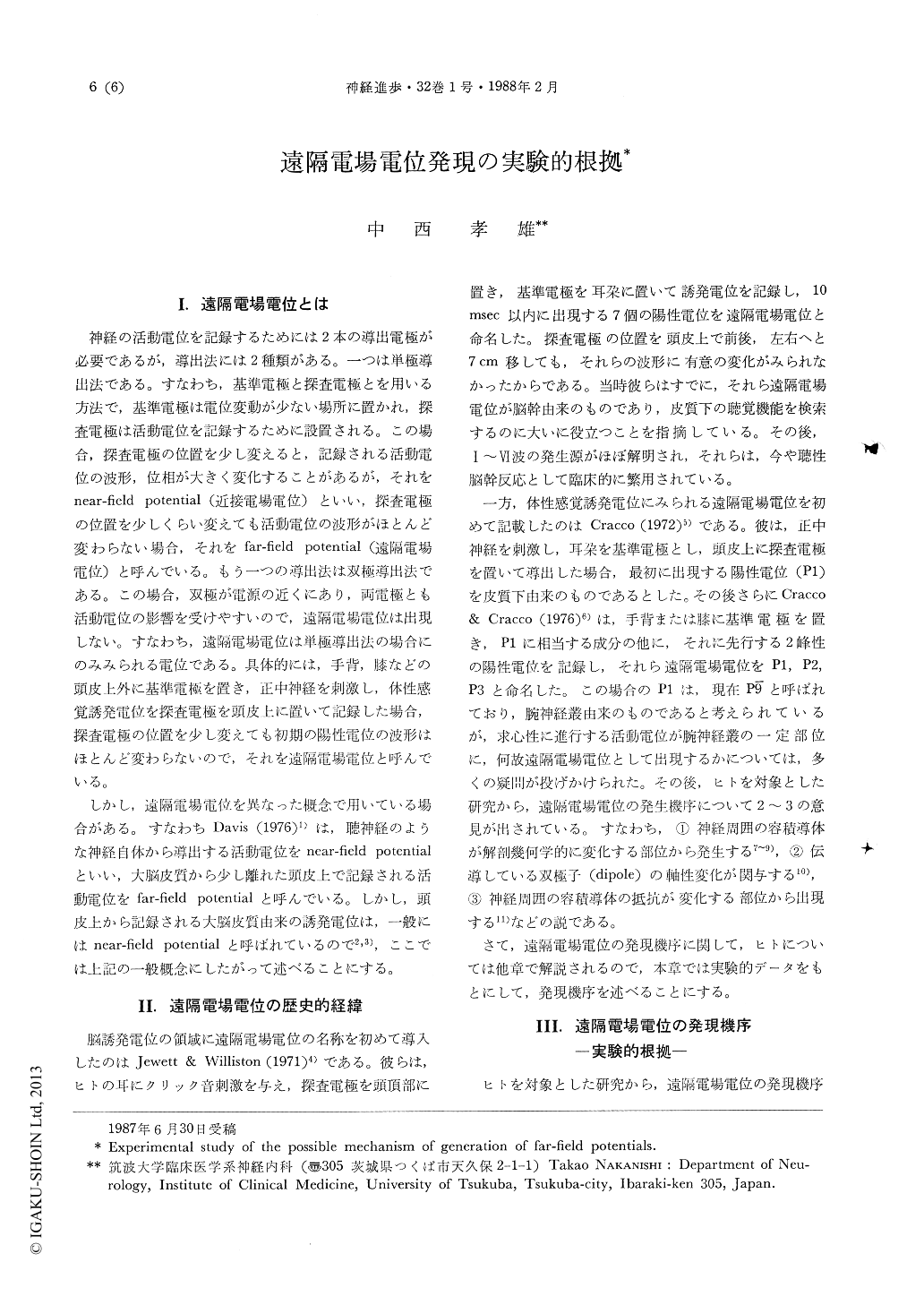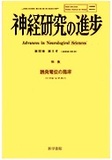Japanese
English
- 有料閲覧
- Abstract 文献概要
- 1ページ目 Look Inside
I.遠隔電場電位とは
神経の活動電位を記録するためには2本の導出電極が必要であるが,導出法には2種類がある。一つは単極導出法である。すなわち,基準電極と探査電極とを用いる方法で,基準電極は電位変動が少ない場所に置かれ,探査電極は活動電位を記録するために設置される。この場合,探査電極の位置を少し変えると,記録される活動電位の波形,位相が大きく変化することがあるが,それをnear-field potential(近接電場電位)といい,探査電極の位置を少しくらい変えても活動電位の波形がほとんど変わらない場合,それをfar-field potential(遠隔電場電位)と呼んでいる。もう一つの導出法は双極導出法である。この場合,双極が電源の近くにあり,両電極とも活動電位の影響を受けやすいので,遠隔電場電位は出現しない。すなわち,遠隔電場電位は単極導出法の場合にのみみられる電位である。具体的には,手背,膝などの頭皮上外に基準電極を置き,正中神経を刺激し,体性感覚誘発電位を探査電極を頭皮上に置いて記録した場合,探査電極の位置を少し変えても初期の陽性電位の波形はほとんど変わらないので,それを遠隔電場電位と呼んでいる。
しかし,遠隔電場電位を異なった概念で用いている場合がある。すなわちDavis(1976)1)は,聴神経のような神経自体から導出する活動電位をnear-field potentialといい,大脳皮質から少し離れた頭皮上で記録される活動電位をfar-field potentialと呼んでいる。しかし,頭皮上から記録される大脳皮質由来の誘発電位は,一般にはnear-field potentialと呼ばれているので2,3),ここでは上記の一般概念にしたがって述べることにする。
As the major factors determining the features of the stationary far-field potential recorded in man, three, that is, a change in axial orientation of the propagated diople (Desmedt et al. 1983), an alteration in current flow due to a major change in the physical characteristics of the medium surrounding the nerve impulse (Lueders et al. 1983) and an abrupt change in current flow at various boundaries of the volume conducter (Kimura et al. 1984), have been proposed. On the other hand, it has been confirmed experimentally that three similar factors such as direction and position of the nerve impulse against two recording electrodes a long distance apart and inhomogeneity and change in the geometry of the sorrounding medium along the nerve are responsible for determining the latency, amplitude and polarity of far-field potentials.

Copyright © 1988, Igaku-Shoin Ltd. All rights reserved.


